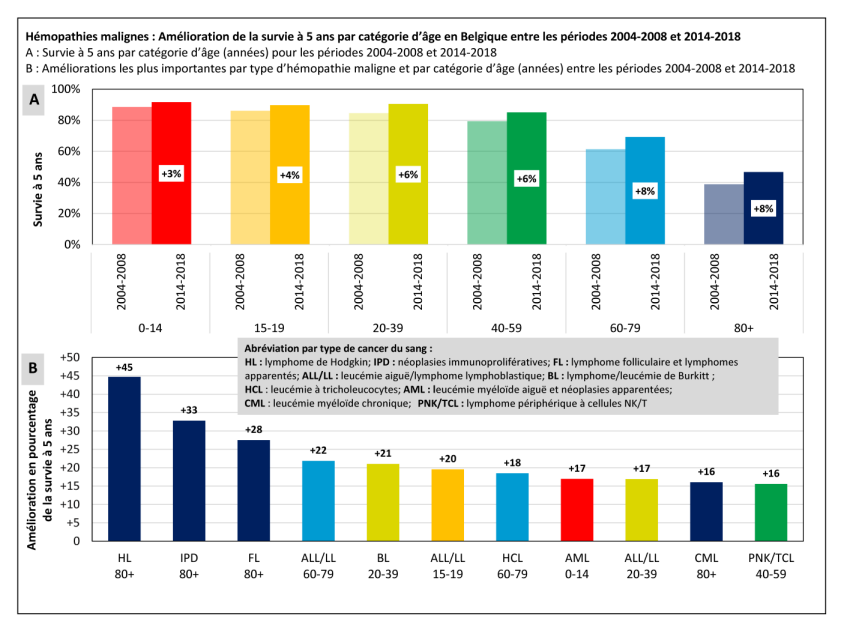
About 7,800 patients are diagnosed with blood cancer each year in Belgium. Blood cancers, or using the scientific term "hematologic malignancies," include various types of cancers of the bone marrow or lymph nodes. These are mainly leukemias and lymphomas. Hematologic malignancies account for almost 11% of all new cancer diagnoses in Belgium. They are more common in men (4,400 diagnoses in 2021) than in women (3,400 diagnoses) and are the fifth most common cancer type.
Belgian Cancer Registry (BCR) published a study in the journal Cancers. “Epidemiological Trends of Haematological Malignancies in Belgium 2004 2018: Older Patient Show the Greatest Improvement in Survival”. This study, supported by Stichting tegen Kanker, describes in detail the evolution of incidence and survival rates of blood cancers in Belgium, over a 15-year period.
Blood cancers are a very diverse group of cancers that are often considered rare and have very diverse clinical and biological characteristics. Therefore, BCR conducted a detailed analysis of the 24 main subtypes, by age group and diagnosed between 2004 and 2018. The increase in incidence and survival is strongest in older individuals. There is an improvement in survival in all age categories. However, this varies widely depending on the type of blood cancer. The greatest increase in survival between the periods 2004-2008 and 2014-2018 is observed in patients aged 60 years and older (8% for both the 60-79 age group and 80 years and older). The greatest improvements are observed in patients aged 80 years and older and up to 45% for a particular type of blood cancer (Hodgkin lymphoma).
This increase in incidence and survival from 2004 to 2018 can probably be explained by the innovations in diagnosis and therapy achieved in the 1990s and 2000s. Those innovations also found their way into populations less frequently included in clinical trials, such as the elderly. The BCR publication is extremely useful for
monitoring the impact of therapeutic developments in blood cancer within the Belgian population and provides a very hopeful picture for the future.
